(국영문 동시 게제) 조선 왕실 군사력의 상징, 군사의례 특별전 개최
- 국립고궁박물관 19일부터 관람 재개, 군사의례 특별전도 열어 (1.19.~3.1) -
정호 기자 /  입력 : 2021년 01월 18일 입력 : 2021년 01월 18일
단기4354년
문화재청 국립고궁박물관(관장 김동영)은 오는 19일부터 관람을 재개해 3월 1일까지 조선 왕실의 군사적 노력과 군사의례에 대해 소개하는 특별전 「조선 왕실 군사력의 상징, 군사의례」를 개최한다.
전시회 관람을 위해서는 국립고궁박물관 누리집을 통해 사전예약을 하거나 현장에서 접수하면 된다. 다만, 코로나19 확산방지를 위하여 사전예약과 현장접수를 합하여 시간당 110명, 일일 최대 900명까지만 입장할 수 있고, ▲ 개인관람만 가능(단체관람 불가)하고 ▲ 마스크 착용과 발열 여부 점검, ▲ 관람객 간 거리 두기, 한 방향으로 관람 등의 방역수칙을 준수하면 된다.
|
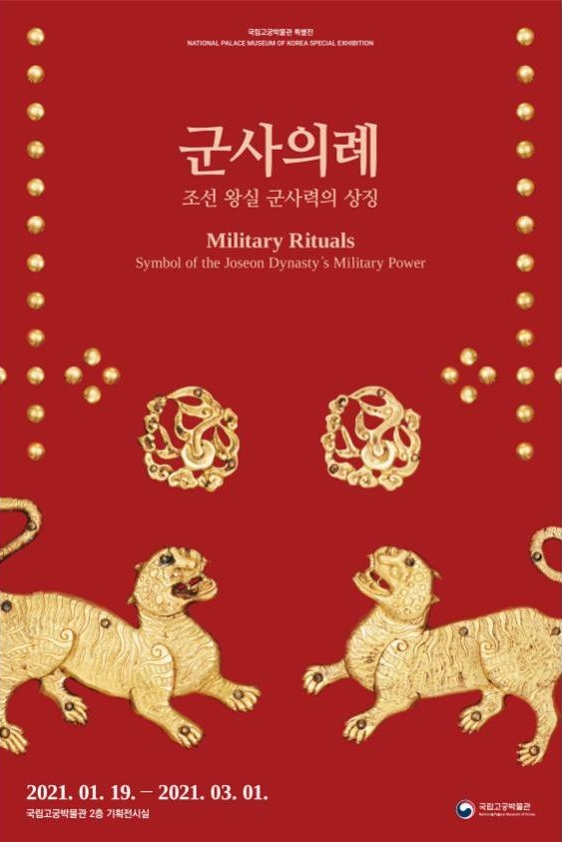 |
|
| ⓒ hy인산인터넷신문 |
|
박물관 재개관에 맞춘 이번 특별전은 조선 왕실의 군사의례를 종합적으로 소개하는 전시로, 조선이 문치(文治)뿐 아니라 무치(武治)를 겸비한 나라였음을 보여주고 있다. 군사들이 착용한 갑옷과 투구, 무기와 다채로운 군사 깃발 등을 포함해 176여 건의 다양한 유물들이 한자리에 선보인다. 이번 전시를 위해 독일 라히프치히 그라시민족학박물관과 함부르크 로텐바움박물관에 소장되어 있던 조선 시대 갑옷과 투구, 무기 등 약 40여 점도 특별히 들여왔으며, 이 유물들은 국내에서는 처음 공개되는 것들이다.
군사의례는 왕이 국가를 통치하는 다섯 가지 국가의례인 오례(五禮) 중 하나로, 국가의 군사적 활동을 의례로 정리한 내용이다. 조선 왕실은 군사의례를 통해 왕이 군통수권을 지니고 있다는 상징성을 부여하고 왕실의 권위를 한껏 드높였다. 이번 특별전은 조선 왕조의 영속을 지탱하고자 했던 왕의 군사권 장악을 위한 노력과 조선 왕조의 군사적 면모를 군사의례를 통해 조명하고자 하였다.
|
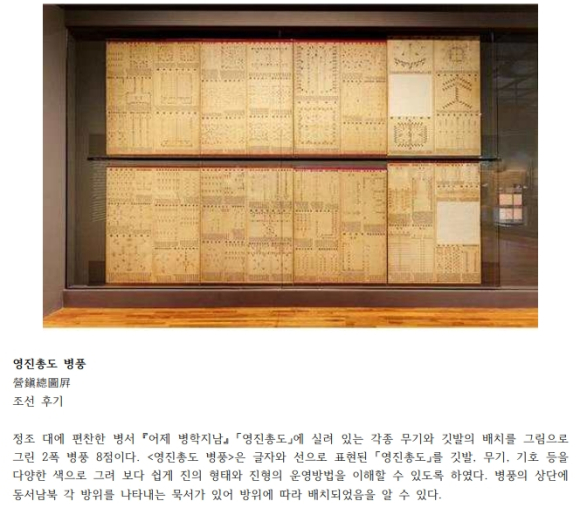 |
|
| ⓒ hy인산인터넷신문 |
|
특별전은 ▲ 1부 ‘조선 국왕의 군사적 노력’, ▲ 2부 ‘조선 왕실의 군사의례’ 총 2부로 구성하였다. 먼저 ▲ 1부 ‘조선 국왕의 군사적 노력’에서는 1592년에 일어난 임진왜란을 기점으로 조선 전기와 조선 후기로 나누어, 주요 왕대별로 편찬된 병서와 회화작품, 임진왜란과 진법에 관한 영상을 함께 전시해 조선이 군사적으로 국가 위기를 극복하려 했던 모습을 살펴본다.
▲ 2부 ‘조선 왕실의 군사의례’에서는 왕을 중심으로 거행한 군사의례를 소개한다. 강무의(講武儀), 구일식의(救日食儀, 해를 구하는 의례), 나쁜 기운을 쫓는 계동대나의(季冬大儺儀), 대사의(大射儀), 선로포의(宣露布儀)와 헌괵의(獻馘儀), 국왕의 군사권을 과시하는 대열의(大閱儀) 등 여섯 가지 군례의 의미와 내용을 의례별로 사용되는 관련 유물로 조명한다.
|
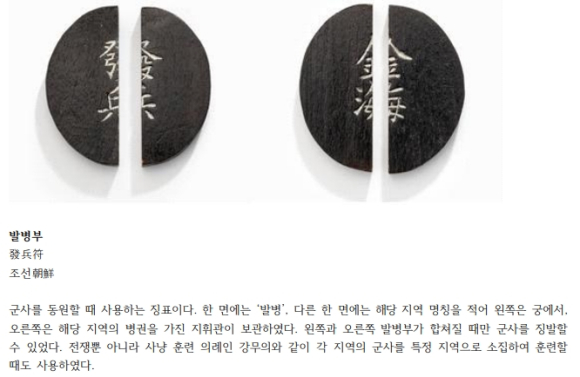 |
|
| ⓒ hy인산인터넷신문 |
|
먼저 왕이 군사를 동원해 사냥하는 형태의 군사훈련인 ‘강무의(講武儀)’는 사냥한 짐승을 종묘 제사에 올릴 때 행하는 의례다. 군사를 동원하기 위해 사용한 징표인 발병부(發兵符), 말안장과 발걸이, 군사복식으로 착용한 철릭(帖裏, 貼裏)과 주립(朱笠) 등 유물이 전시된다.
* 철릭: 저고리와 주름 잡은 치마를 허리에 연결시킨 군사복식으로 평상복으로도 착용됨
* 주립: 신분이 높은 당상관이 착용하는 붉은색 칠을 한 갓으로 철릭과 함께 입음
조선 후기에 등장한 군복(軍服)을 입은 왕의 모습을 유일하게 볼 수 있는 <철종 어진> 그리고 어진(御眞) 속에 그려진 군복, 지휘봉, 허리띠, 깍지, 칼(환도, 環刀) 등과 유사한 유물을 함께 구성하여, 군대의 최고 통수권자인 왕의 모습을 시각적으로 각인시키고자 했다.
* 어진: 왕의 초상화
* 깍지: 활시위를 잡아당길 때 엄지손가락에 끼워 손가락을 보호하기 위한 도구
‘구일식의(救日食儀)’와 ‘계동대나의(季冬大儺儀)’는 자연현상에 대해 군사력으로 상황을 안정시켜 일상을 회복하려 했던 상징적 군례다. ‘구일식의’는 해가 일시적으로 사라지는 현상인 일식을 구제하기 위해 거행했던 의례로, 왕과 신하들이 구일식의 때 입는 복식을 통해, 일식에 대해 경건하고 두려워하는 마음을 표현하고자 했음을 알 수 있다. ‘계동대나의’는 역병을 쫓아내기 위한 의례다. 역귀를 몰아내는 역할을 한 인물이 쓰는 방상시(方相氏) 가면은 조선 시대 유물로 유일하게 남아있는 것이다.
|
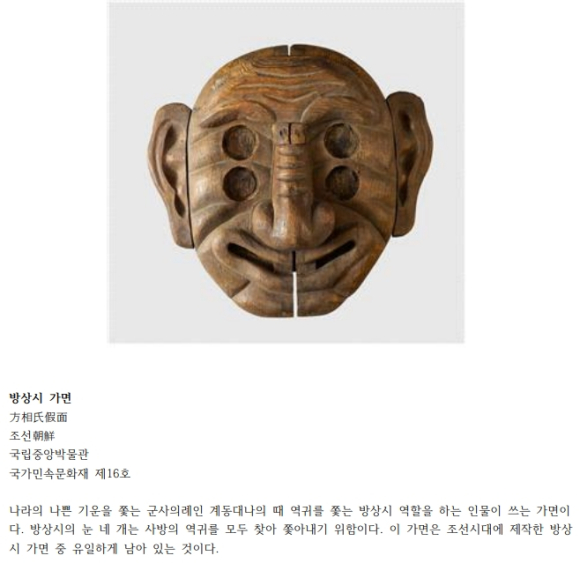 |
|
| ⓒ hy인산인터넷신문 |
|
‘대사의(大射儀)’는 왕과 신하가 활쏘기로 화합하는 군례로, 군자의 덕을 함양하는 수단인 인격 수양의 행위로 인식된 의례다. 1743년(영조 19) 영조가 중단되었던 대사의를 200여 년 만에 다시 거행하고 기록한 『대사례의궤』, 기록화로 남긴 <대사례도>, 참여자의 복식, 활과 화살, 활을 쏠 때 사용하는 부속구 등의 유물이 전시된다. 또한 <대사례도>에 그려진 의식 순서별 장면을 만화영상 자료로 함께 소개한다.
‘선로포의(宣露布儀)’와 ‘헌괵의(獻馘儀)’는 전쟁의 승리 과정을 적은 노포와 적의 잘린 머리 등을 거리에 내걸어 승리를 대대적으로 알리고자 한 의례다. 아울러 1744년(영조 20) 영조가 『국조속오례의』에 정식 군사의례로 수록하여 국왕의 굳건한 권위를 명시하고자 한 정치적 행위이기도 하다. 전시에서는 노포를 걸고 적의 머리를 왕에게 바친 후 성 밖에 내걸어놓는 과정을 만화영상으로 상영해 이해를 돕고 있다.
마지막으로 이번 전시에서 가장 화려한 볼거리를 제공하는 ‘대열의(大閱儀)’는 왕이 직접 주관하는 대규모 진법 훈련이자 최대의 군사의례다. 대열의 전시공간에서는 진법 훈련에 필수적인 갑옷과 투구, 무기, 그리고 지휘 신호용 깃발‧악기‧화약무기 등을 감상할 수 있다. 그 중에서도 독일 라히프치히 그라시민족학박물관에 소장된 갑옷과 투구, 갑주함(갑옷과 투구 보관함), 투구 싸개, 갑옷 안에 입는 내의, 보자기 등 일습 유물은 국내에서 최초로 공개되는 작품으로 보존상태 또한 매우 좋다.
|
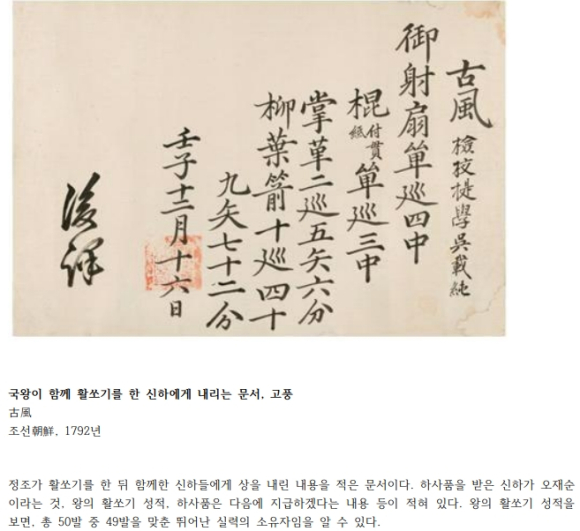 |
|
| ⓒ hy인산인터넷신문 |
|
갑옷과 투구 공간은 대열의를 상상할 수 있게 만든 대형 영상 화면을 배경으로, 왕의 시선에서 바라보듯 장수와 병사들이 사열하고 있는 느낌을 받을 수 있게 연출하였다. 건너편 벽면에는 국립고궁박물관에 소장된 다종다양한 깃발들이 한꺼번에 전시되어 공간을 압도한다. 또한, 디지털기술을 활용한 활쏘기 체험 공간과 군사의례를 바탕으로 한 대형 영상을 별도의 공간에 마련하여, 관람객이 더 쉽고 즐겁게 전시를 경험할 수 있도록 했다.
국립고궁박물관은 전시실을 직접 방문하지 못하는 관람객을 위해 1월 19일부터 온라인으로도 전시를 둘러볼 수 있도록 하였다. 국립고궁박물관 누리집과 문화재청‧국립고궁박물관 유튜브에서 전시 전경 영상과 전시 해설 영상을 감상할 수 있다.
* 국립고궁박물관 누리집: www.gogung.go.kr
국립고궁박물관 유튜브: https://youtube.com/gogungmuseum
문화재청 유튜브: https://youtube.com/chluvu
|
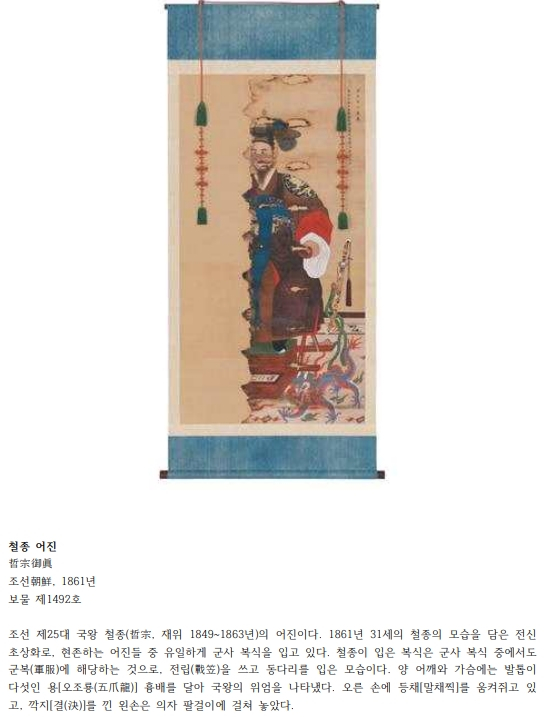 |
|
| ⓒ hy인산인터넷신문 |
|
다음 포털의 카카오 갤러리(https://gallery.v.daum.net/MilitaryRituals)에서도 주요 전시 내용과 유물에 대한 설명을 담은 온라인 전시를 함께 제공한다. 이외에도 매주 목요일에는 세부 주제별 이야기를 담은 영상을 네 차례 순차적으로 관람할 수 있도록 하였다. 1월 29일에는 특별전을 더욱 생생하게 볼 수 있는 가상현실(VR) 콘텐츠도 박물관 누리집에서 공개할 예정이다.
한편, 특별전 주제를 심도 있게 알 수 있는 두 차례의 연계 강연이 준비되어 있다. 비대면으로 진행되는 강의는 1월 21일 ▲ 조선 왕실의 상무, 군례(이왕무, 경기대학교) 강의와 2월 4일 ▲ 조선 시대 군사의례와 복식(박가영, 숭의여자대학교)과 ▲ 조선 후기 군사 신호체계와 군사훈련(최형국, 한국전통무예연구소) 강의 등 총 3개가 마련되어 있다. 관심 있는 누구나 국립고궁박물관 누리집과 유튜브에서 1월 21일과 2월 4일부터 볼 수 있다.
* 특별강연: 1.21. 조선 왕실의 상무(尙武), 군례(軍禮)(이왕무, 경기대학교)
2.4. 조선시대 군사의례와 복식(박가영, 숭의여자대학교)
조선 후기 군사 신호체계와 군사훈련(최형국, 한국전통무예연구소)
|
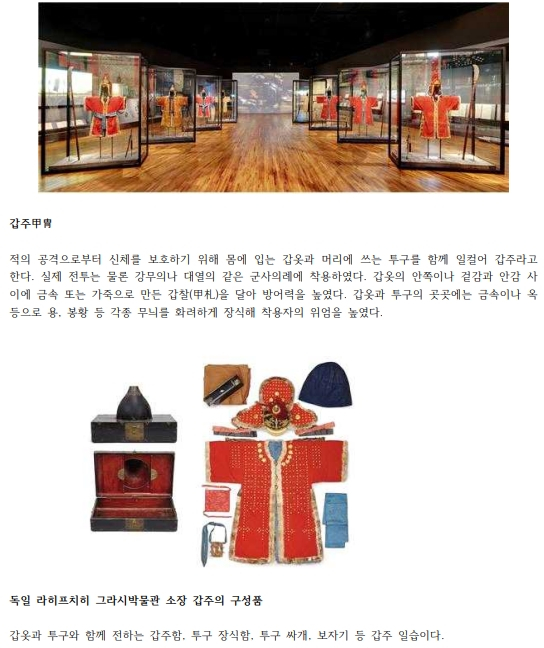 |
|
| ⓒ hy인산인터넷신문 |
|
이 밖에도 특별전과 연계한 교육으로 전시 내용과 유물에 관한 이야기를 알기 쉽게 퀴즈 등을 통해 학습하는 ‘조선 왕실 군사력의 상징, 군사의례 온라인 전시해설’은 이미 지난 4일부터 진행하고 있다. 교육 참여에 관한 자세한 사항은 박물관 누리집에서 확인하거나 전화(☎02-3701-7653)로 문의하면 된다.
문화재청 국립고궁박물관은 「조선 왕실 군사력의 상징, 군사의례」 전시로 조선왕조의 군례를 종합적으로 소개하며, 위험에 대처하고 위기를 극복하기 위한 노력을 보여주고자 한다. 코로나19로 어려움을 겪는 국민에게 역사적 의미와 함께 풍부한 볼거리를 제공하여 일상의 활력을 되찾는 작은 도움이 되길 바란다.
|
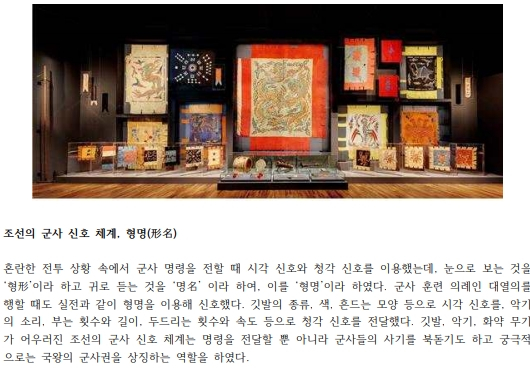 |
|
| ⓒ hy인산인터넷신문 |
|
Inauguration of the Special Exhibition Military Rituals – Symbol of Joseon Dynasty’s Military Power
January 19– March 1, 2021, National Palace Museum of Korea
Situated just a few steps from Gyeongbokgung Palace Station on Seoul Subway Line 3, the National Palace Museum of Korea (Director: Kim Dong-Young) specializes in the collection, research, and exhibition of heritage artifacts from the Joseon Dynasty royal court (1392–1910). The museum is temporarily closed as part of efforts to prevent the spread of COVID-19, so the special exhibition Military Rituals–Symbols of the Joseon Dynasty’s Military Power will be first unveiled virtually on January 19 through online platforms including the museum website, YouTube, and others.
The National Palace Museum of Korea (Director: Kim Dong-Young), an affiliate of the Cultural Heritage Administration of Korea, is presenting the special exhibition Military Rituals – Symbols of the Joseon Dynasty’s Military Power. This exhibition introducing military endeavors and rituals in the Joseon royal court will be held from January 19 through March 1, 2021.
Military rites were one category of five Joseon state ceremonies with systemized protocols and procedures considered necessary to govern the state, known collectively as the Five State Rites. The military rites signified that the king had supreme command of the armed forces, and they also served to enhance the authority of the Joseon royal court. The exhibition aims to use these rites to spotlight Joseon kings’ efforts at demonstrating their military command and sustain the dynasty and explore the military endeavors of the Joseon Dynasty.
The special exhibition consists of two main sections – Part I. Military Endeavors the Joseon Dynasty and Part II. Military Rituals of the Joseon Dynasty. The first section, “Military Endeavors of the Joseon Dynasty” explores how people of the time attempted to overcome national crises through military practices. Dividing the Joseon Dynasty into two periods with 1592 (beginning of the Japanese Invasions of Korea) as a reference point, this section showcases books and paintings on military science in chronological order. Also presented is a video on the Japanese Invasions of Korea (1592-1598) and tactical formations applied in military training.
The second section, “Military Rituals of the Joseon Dynasty,” sheds light on the contents and significance of the six military rituals (Gangmuui, Guilsigui, Gyeodongdaenaui, Daesaui, Seollopoui, and Heongoegui), in which the king also participated, through the artifacts related to each practice. Gangmuui, a military ritual in which the king went hunting with his soldiers, was performed to capture wild game for sacrificial rites performed at the Jongmyo Shrine. Artifacts such as Wooden Tablet Authorizing Military Mobilization, Horse Saddle and Stirrups, Military Official’s Robe, and Military Official’s Hat offer a glimpse into the ritual.
Moreover, the Portrait of King Cheoljong, the only late-Joseon painting that shows the king in military attire, is displayed in the exhibition together with related artifacts, such as military uniform, commander’s club, waist band, thumb ring, and sword. Together they allow a visualization of the king as commander-in-chief.
Guilsigui and Gyedongdaenaui are rituals with symbolic meaning that were performed in an attempt to utilize military force to stabilize natural phenomena and restore normalcy. Guilsigui was performed to make the sun reappear during the solar eclipse, while Gyeongdongdaenaui was performed to drive away evil spirts that were believed to cause infectious disease. Displayed in this section is the only surviving example of a Joseon-era Bangsangsi Mask, worn by a person charged with expelling evil spirits.
Daesaui, a military ritual in which the king practices archery together with his subjects, was considered important for developing self-discipline and nurturing virtue. This rite is examined through artifacts such as Book with Records on Formal Archery Ritual (documenting the Daesaui hosted by King Yeongjo in 1743, a resumption of the ritual after a gap of 200 years), Painting of a Formal Archery Ritual (documenting the 1743 event), attire of participants, bows and arrows, and other accessories for archery. Also featured is an animation of the scenes depicted in Painting of Formal Archery Ritual, presented in the sequential order of the ritual.
Seollopoui and Heongoegui are rituals for proclaiming victory by displaying a decree describing how a war was fought and victory was won alongside the severed head of an enemy leader. They were recognized as formal military rituals in 1744 when King Yeongjo (r. 1724–1776) published them in the book of state rites. This formalization by Yeongjo was also a political act to display his authority. To offer visitors with a better understanding of the rite, this part of the exhibition is made into an animated short film featuring the process of submission of the victory decree to the king, followed by the presentation of the enemy’s head to the king and displaying the head outside the palace.
Daeyeorui is a military exercise directly commanded by the king that mobilized a greater number of soldiers than the other military rituals. The exhibition space for Daeyeorui offers a unique visual attraction, showcasing artifacts that were required for the performance of the military exercise, such as armor, helmets, weapons, and military signal systems like flags and musical instruments. Among the exhibits, a set of artifacts from the Grassi Museum of Ethnography Leipzig collection that includes armor, a helmet, a storage box for the set, a helmet cover, an inner garment, and wrapping cloth is in pristine condition and is being displayed in Korea for the first time.
The space dedicated to armor and helmets features a background with a large video screen that will allow visitors to imagine the Daeyeori ritual from the perspective of the king commanding the lines of soldiers. On the opposite wall is an impressive display of the large collection of flags housed in the National Palace Museum of Korea.
The exhibition also offers a corner to practice archery through interactive digital technology and a space for an immersive video experience on military rituals, creating a more enjoyable museum experience for visitors.
Visitors are required to have timed reservations to see the exhibition. Reservations can be made online on the museum’s website or at the on-site ticket office. To prevent the spread of COVID-19, the number of visitors will be limited to 100 per hour and 900 per day. To ensure a safe environment for all, the museum has the following additional protocols: individual tours only (no group visits allowed); check of face covering and temperature at entry; and maintain one-way paths in the galleries.
For visitors unable to visit the gallery in person, the exhibition will be available for viewing online from January 19. The exhibition, including through views of the installations and curator-led tours, can be explored through videos posted on the National Palace Museum of Korea website (www.gogung.go.kr) the YouTube channels of the Cultural Heritage Administration and the National Palace Museum of Korea.
* National Palace Museum of Korea Website: www.gogung.go.kr
National Palace Museum of Korea YouTube: https://www.youtube.com/gogungmuseum
Cultural Heritage Administration YouTube: https://www.youtube.com/chluvu
Visitors may also stroll the exhibition virtually and enjoy highlights from the exhibition with descriptions of the exhibited artifacts on the Daum virtual gallery (https://gallery.v.daum.net/MilitaryRituals). Moreover, videos telling stories on a specific topic will be released every Thursday for four weeks. On January 29, a virtual reality (VR) component will be unveiled that allows a more vivid experience of the exhibition. |
정호 기자 /  입력 : 2021년 01월 18일 
- Copyrights ⓒhy인산인터넷신문. 무단 전재 및 재배포 금지 -
|
|
|

 회원가입
회원가입 기사쓰기
기사쓰기 전체기사보기
전체기사보기
 원격
원격
